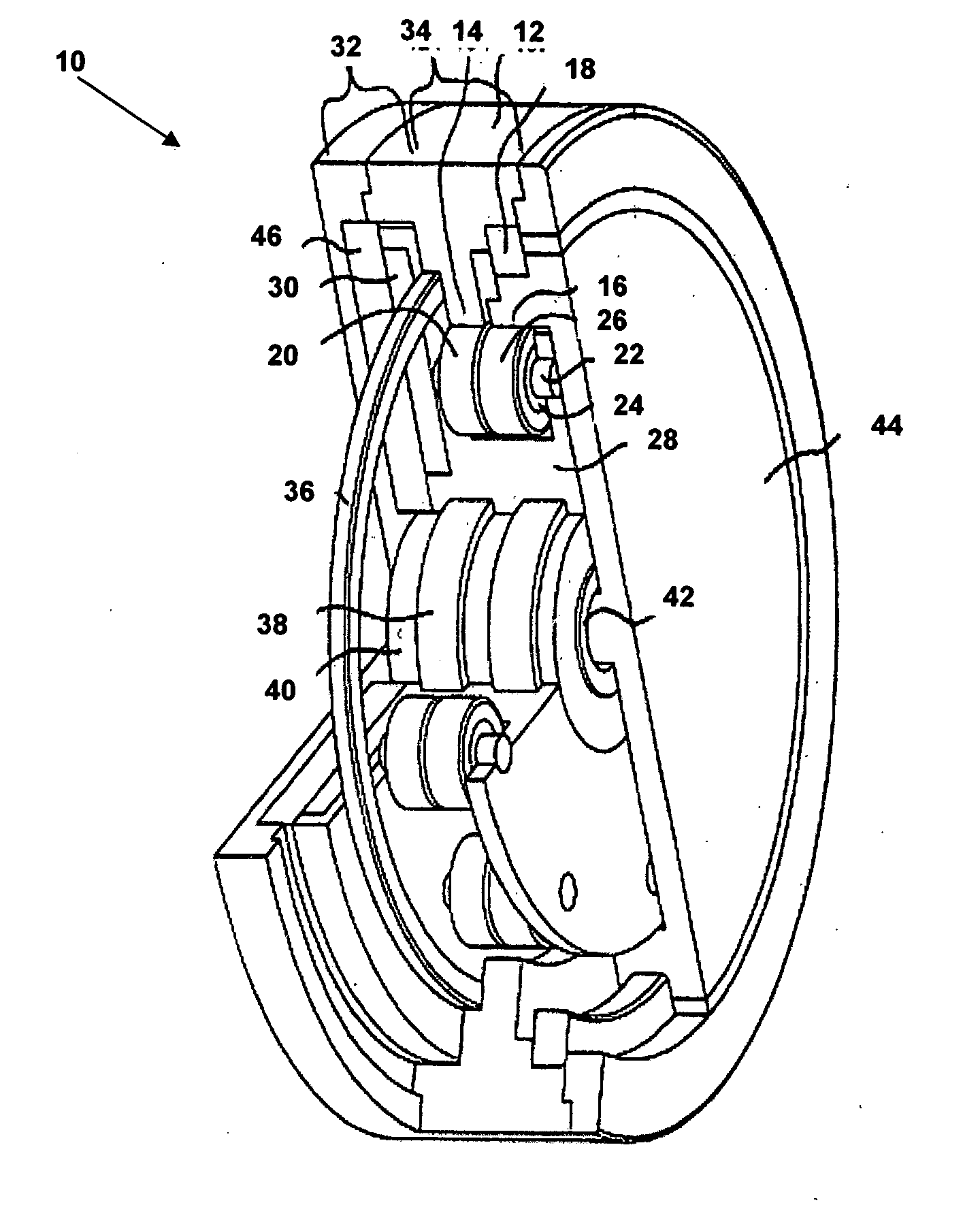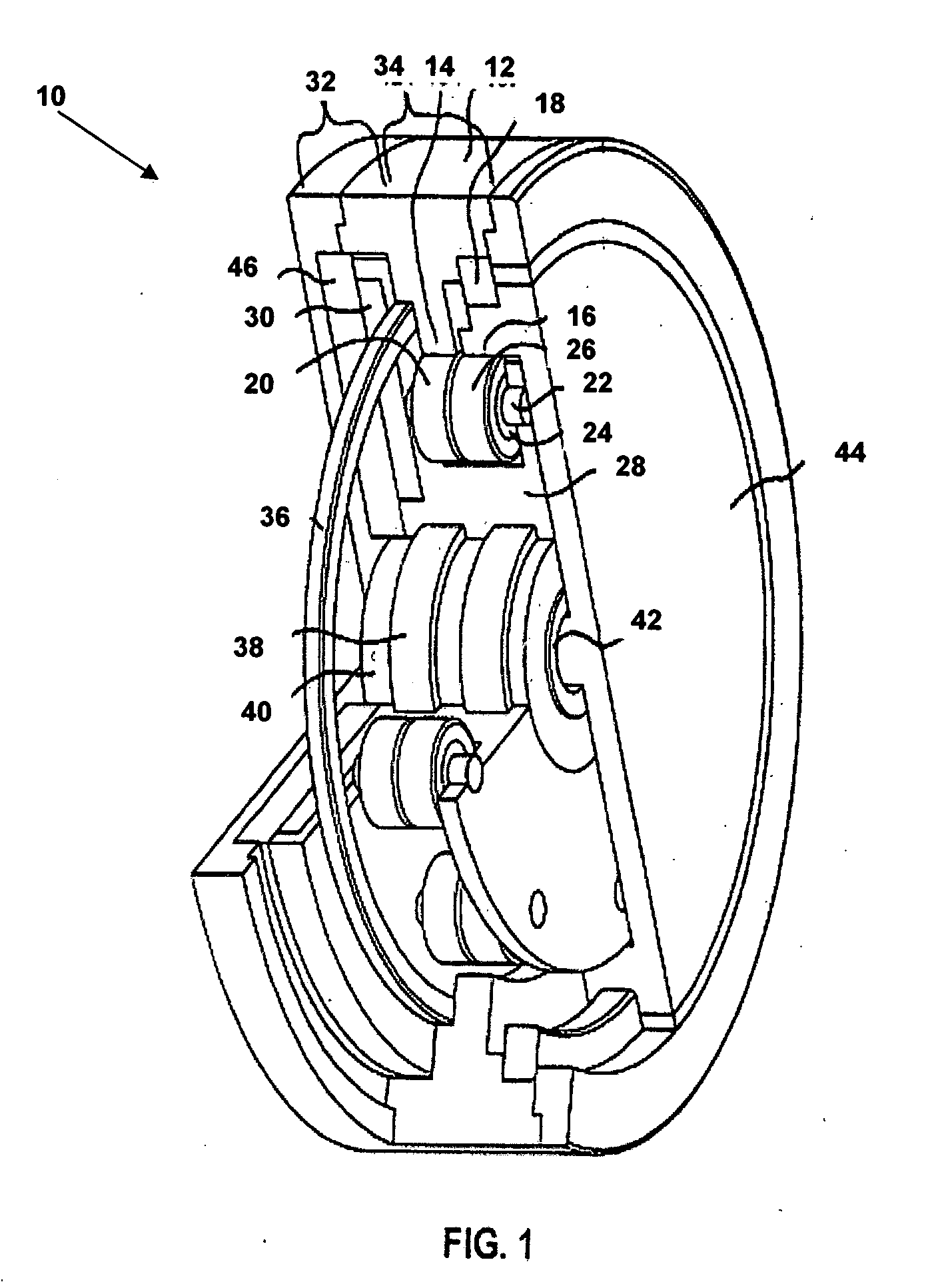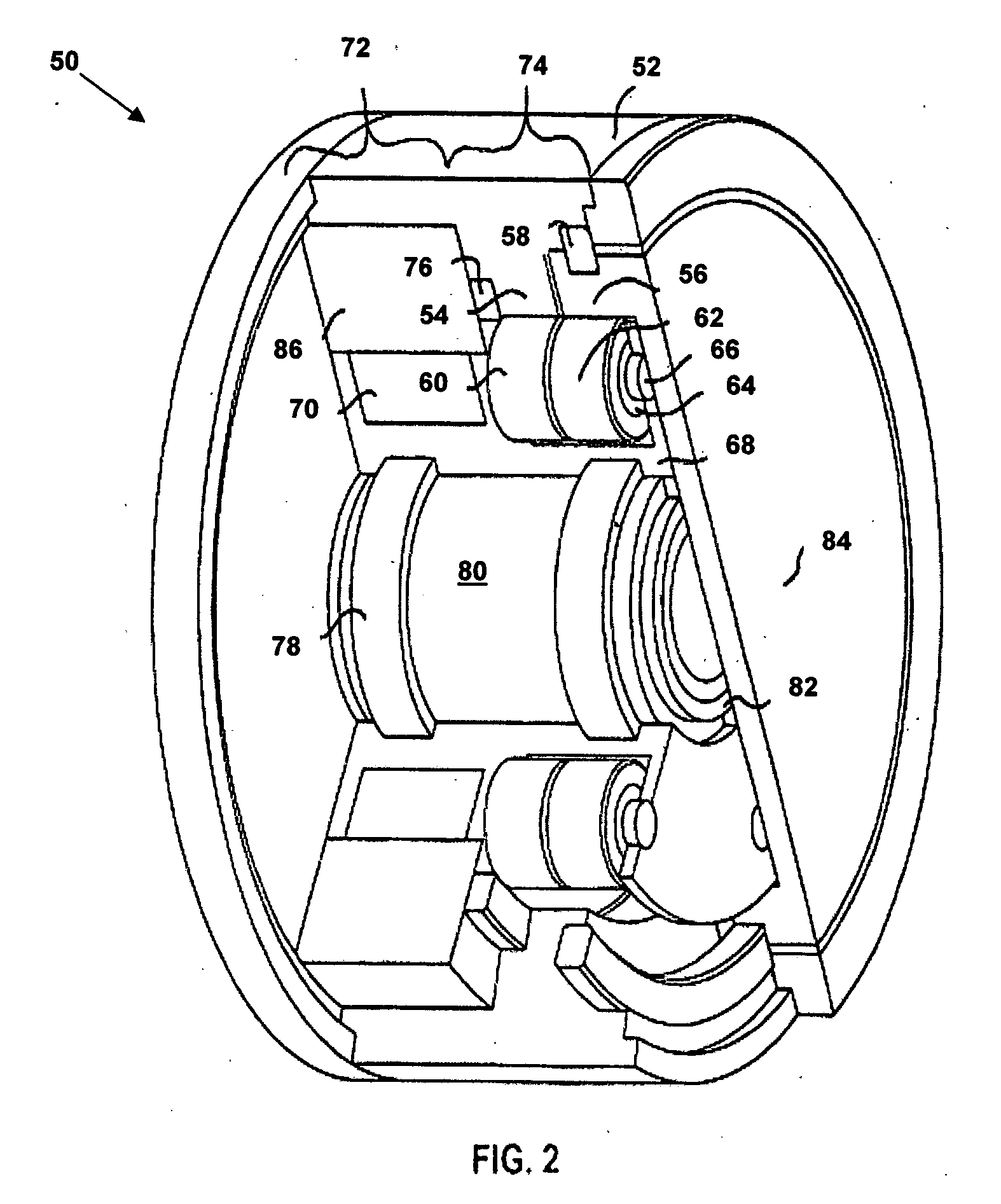Self-contained rotary actuator
a self-contained, rotary actuator technology, applied in the direction of gearings, oblique crank gearings, wobble plate gearings, etc., can solve the problems of cumbersome operator interfaces, low rate of change and diffusion of new technology, relatively high cost, etc., and achieve the effect of drastically reducing the level of custom engineering required for the implementation of a motion control system
- Summary
- Abstract
- Description
- Claims
- Application Information
AI Technical Summary
Benefits of technology
Problems solved by technology
Method used
Image
Examples
second embodiment
[0050]FIG. 2 depicts rotary actuator 50 in an isometric cutaway view in accordance with the present disclosure. Rotary actuator 50 is typically longer than rotary actuator 10, and there is more concern for the stiffness of the planet cage 68. Accordingly, additional support is provided by bearing 76, embedded in the stiff attachment shell 52 of actuator 50. In order to simplify the design of rotary actuator 50, the planets 60 and 62 are supported by bearings 64 which ride on shafts 66, which are press fit into the planet cage 68 to further increase the stiffness of planet cage 68.
[0051] The output attachment plate 84 and central stationary shaft 230 are mutually supported by bearing 82. Generally, because of higher velocities in the D.C. motor, the structure of the planet cage 68 will be lightened to reduce inertia and the bearings 58, 64, and 76 will be chosen for this higher velocity regime.
[0052] As will be appreciated by those of skill in the art, additional planets tend to inc...
fourth embodiment
[0075]FIG. 4, depicts a cutaway isometric view of a rotary actuator 130 in accordance with the present disclosure. The rotary actuator 130 incorporates a central stationary shaft 156 holding support bearings 155 that support the rotating motor armature 148 that drives the eccentric 157. Support bearings 144 on the eccentric 147 drive the wobble cylinder, which contains the planetary gears 140 and 142 that mesh with the bull gear 134 and sun gear 136 separated by the principal cross-roller bearing or similar large diameter bearing 138.
[0076] Rotary actuator 130 employs a pancake configuration that incorporates an SRM prime mover 150 to produce a high torque / low speed rotary actuator 130.
[0077] Bearing 158 in the output attachment plate 160 supports the end of the stationary shaft 156. Seal 164 separates the output attachment plate 160 from the shell 132 and protects the cross-roller bearing 138 from the elements.
[0078]FIG. 5 depicts a cutaway isometric view of a rotary actuator 170...
PUM
 Login to View More
Login to View More Abstract
Description
Claims
Application Information
 Login to View More
Login to View More - R&D
- Intellectual Property
- Life Sciences
- Materials
- Tech Scout
- Unparalleled Data Quality
- Higher Quality Content
- 60% Fewer Hallucinations
Browse by: Latest US Patents, China's latest patents, Technical Efficacy Thesaurus, Application Domain, Technology Topic, Popular Technical Reports.
© 2025 PatSnap. All rights reserved.Legal|Privacy policy|Modern Slavery Act Transparency Statement|Sitemap|About US| Contact US: help@patsnap.com



